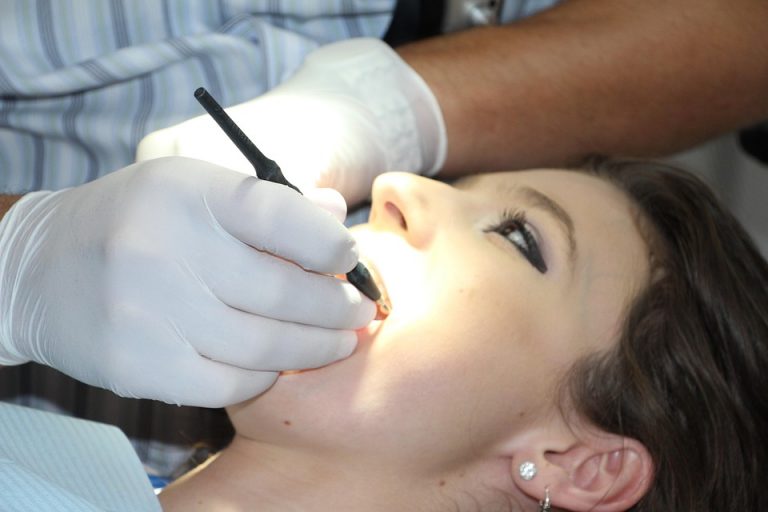Contents
- Best pet care practices mean more than feeding and walks; they are a promise you make to your animal’s health, happiness and longevity.
- Best Pet Care Practices: 7 Ways To Start
- How To Tailor Practices For Different Pets
- Practical Daily Checklist You Can Use
- When To Call Your Veterinarian
- Communicating With Your Vet Like A Pro
- Behavior Problems Are Health Problems
- The Role Of Training And Positive Reinforcement
- Cost-Effective Strategies That Still Deliver
- Using Technology Without Losing the Human Touch
- Bottom Line
- FAQ
Best pet care practices mean more than feeding and walks; they are a promise you make to your animal’s health, happiness and longevity.
Best pet care practices are the practical steps and choices that keep your dog, cat, bird, or exotic companion thriving — physically, mentally, and emotionally. This matters because pets give us devotion and joy, and you owe them thoughtful, evidence-backed care. I’ll show you simple, confident actions you can take that align with veterinary science, animal behavior research, and real-life experience.
When you commit to the best pet care practices, you build a routine that prevents costly emergencies and deepens the bond between you and your animal. You’ll learn to spot early warning signs, choose the right food, and create an enriching environment. These are small shifts with huge rewards.
Best Pet Care Practices: 7 Ways To Start
1. Prioritize Preventive Veterinary Care
Take your pet to a trusted veterinarian for regular checkups. Preventive visits catch problems before they snowball. Vaccinations, dental checks, parasite control, and weight assessments are not optional — they’re the backbone of best pet care practices.
Research from the American Veterinary Medical Association shows preventive vet care reduces disease risks and improves lifespan, and the American Animal Hospital Association provides clear wellness schedules appropriate for different life stages. If cost is an issue, ask your vet about payment plans, local clinics, or community programs that support ongoing care.
2. Feed With Purpose — Quality Over Gimmicks
Food is medicine. A balanced diet tailored to species, age, weight, and health conditions is a cornerstone of best pet care practices. Read ingredient lists; prioritize named proteins and complete nutrition statements from reputable brands.
If your pet has allergies or weight issues, work with your vet or a board-certified veterinary nutritionist. University veterinary schools like the one at the University of California teach evidence-based nutritional plans for complicated cases. Controlled portions and scheduled meals prevent overeating and support long-term wellness.
3. Keep Exercise Fun And Appropriate
Physical activity keeps bodies strong and brains healthy. For dogs, structured walks and off-leash time in safe areas meet physical needs and reduce behavioral problems. For cats, short bursts of play with wand toys mimic hunting and reduce boredom. Birds and small mammals also need supervised out-of-cage time.
Exercise is a key element of best pet care practices because it prevents obesity, supports joint health, and improves mood. The American College of Veterinary Behaviorists recommends enrichment activities as non-pharmaceutical ways to reduce anxiety and destructive behavior.
4. Mental Enrichment Isn’t Optional
Mental stimulation matters as much as physical movement. Puzzle feeders, scent games, and training sessions give your pet a job to do and reinforce your relationship. Rotate toys and introduce new challenges regularly.
Incorporating enrichment is a signature of the best pet care practices approach — it reduces stress, improves adaptability, and prevents depression-like behaviors in animals. Behavioral research consistently shows enriched environments improve problem-solving and reduce stereotypic behaviors.
5. Grooming And Dental Care: The Overlooked Essentials
Grooming reveals problems early. Brushing fur, trimming nails, checking ears, and cleaning teeth all prevent pain and infection. Many owners miss dental disease until it’s advanced; routine brushing and professional cleanings are crucial.
Add daily or weekly checks to your routine and you’ll be practicing the best pet care practices that catch trouble early and save you money. The National Institutes of Health and veterinary dental associations highlight oral health as strongly linked to systemic conditions like heart disease.
6. Create Safe, Comfortable Spaces
Your home should be a sanctuary. Provide temperature-appropriate bedding, quiet resting spots, and secure areas where your pet can retreat. Puppy-proof and cat-proof with safety in mind: hide cords, secure trash, and keep toxic plants and human medications locked away.
Safety and a predictable environment are core to best pet care practices because they reduce injury and anxiety. The CDC’s Healthy Pets guidance includes specific tips on preventing zoonotic disease and maintaining a safe home environment for both humans and animals.
7. Build A Trusted Emergency Plan
Even with the best routine, emergencies happen. Know the location and hours of emergency veterinary hospitals near you. Keep an updated first-aid kit, an emergency contact list, and copies of vaccination and medical records.
An emergency plan completes best pet care practices — it reduces panic and speeds life-saving interventions. The American Red Cross has pet-first-aid resources that are practical and easy to implement, and local shelters may offer disaster-preparedness workshops.
How To Tailor Practices For Different Pets
Small animals, birds, reptiles, and fish each have unique needs. For example, reptiles require specific heat gradients and UVB lighting for metabolic health, while birds need social interaction and chewable materials to prevent boredom. A rabbit’s digestive system depends on constant hay access and dental wear from fibrous food.
Tailoring care is central to best pet care practices. Dive into species-specific resources from universities and specialty organizations to create the right habitat and schedule for your companion.
Practical Daily Checklist You Can Use
Follow a simple daily checklist to make best pet care practices habitual:
- Offer fresh water and appropriate portions at scheduled times.
- Spend at least 15–30 minutes in active play or training.
- Do a quick body check: eyes, ears, coat, and gait.
- Provide one mental enrichment activity (puzzle feeder, scent game).
- Brush or clean teeth as recommended for your species.
- Tidy the living space, switching out toys or bedding if needed.
Repeat this routine and it becomes invisible — until something goes wrong and you won’t be surprised.
When To Call Your Veterinarian
Not every hiccup needs a trip to emergency. But certain signs demand immediate attention: sudden collapse, difficulty breathing, unresponsive bleeding, severe vomiting or diarrhea, and major trauma. If you see subtle changes in eating, drinking, elimination, or behavior that last more than 48 hours, call your vet.
Knowing when to escalate care is a hallmark of best pet care practices. Keep lines of communication open with your clinic; many vets give triage advice over the phone and can guide you toward the right level of care.
Communicating With Your Vet Like A Pro
Bring clear observations. Note timing, frequency, severity, and any triggers. Photos and short videos are powerful. Ask for explanations in plain language and request written instructions for follow-up at home.
This level of partnership is part of best pet care practices. A collaborative relationship with your vet leads to better preventive care plans and faster recovery when illness strikes.
Behavior Problems Are Health Problems
If your pet chews, urinates inappropriately, or becomes aggressive, view it as a symptom, not just misbehavior. Pain, anxiety, and medical conditions often underlie these shifts. An assessment that combines medical testing with behavior evaluation is the gold standard.
Addressing behavior as health care is an advanced element of best pet care practices. Seek help from a veterinary behaviorist when issues are complex or dangerous.
The Role Of Training And Positive Reinforcement
Training isn’t domination. It’s communication. Use positive reinforcement to teach manners, improve confidence, and make vet visits calmer. Short, consistent sessions with high-value rewards work better than long, inconsistent attempts.
Good training practices are central to best pet care practices because they reduce stress and build a better daily life for both of you.
Cost-Effective Strategies That Still Deliver
Quality care doesn’t always mean expensive. Preventive care, home grooming, routine exercise, and smart food choices reduce long-term costs. Compare subscription services for food or medications, and seek community programs for low-cost vaccinations or spay/neuter.
Smart budgeting is part of best pet care practices — it keeps care sustainable without sacrificing quality.
Using Technology Without Losing the Human Touch
Apps and smart feeders help with reminders, medication scheduling, and remote enrichment. Telemedicine is useful for non-urgent consultations. But technology should never replace touch, play, and real-time observation.
Balanced use of tech supports best pet care practices by giving you tools to stay consistent while keeping the personal bond intact.
Bottom Line
The bottom line: adopt the best pet care practices that prioritize prevention, nutrition, mental and physical enrichment, safety, and a trusted emergency plan. Small daily habits compound into a longer, healthier life for your pet and deeper companionship for you. Start with one change this week — book a wellness check, swap a low-quality treat for a nutritious option, or add five minutes of play — and watch the difference.
You owe your pet reliable, loving care. Make it practical. Make it informed. Make it yours.
Boldly, kindly, and with conviction — you can do this.
FAQ
How often should I take my pet to the vet?
Adult pets typically need annual wellness exams; seniors and young animals may need more frequent visits. Follow guidelines from your vet tailored to your pet’s age, species, and health profile.
What if I can’t afford regular vet care?
Look for low-cost clinics, nonprofit programs, and community veterinary services. Many veterinary schools and animal welfare organizations offer sliding-scale care or payment plans to keep preventive care accessible.
How do I choose the best food for my pet?
Choose foods with clear ingredient lists, appropriate life-stage labeling, and guidance from your veterinarian. For special needs, consult a veterinary nutritionist or university veterinary program.
Can I use human dental products for my pet?
No — use products formulated for pets or those your veterinarian recommends. Human toothpaste can be unsafe; pet-specific toothpaste and brushes make dental care effective and safe.
References
The American Veterinary Medical Association provides resources and guidelines on preventive care and wellness planning at (http://www.avma.org).
The Centers for Disease Control and Prevention offers guidance on healthy pets and zoonotic disease prevention at (https://www.cdc.gov/healthypets).
The American Animal Hospital Association publishes veterinary standards and wellness recommendations that inform best practices at (https://www.aaha.org).
The American College of Veterinary Behaviorists offers insights into behavioral health and enrichment strategies at (https://www.dacvb.org).
The National Institutes of Health hosts research on veterinary dental health and systemic links at (https://www.nih.gov).








